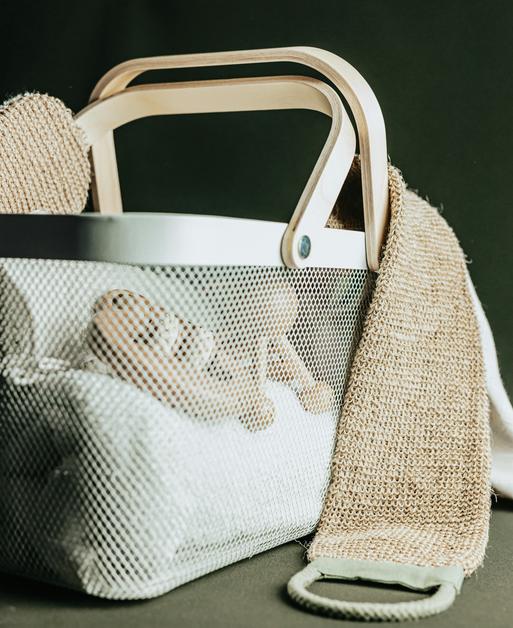Welcoming a newborn is rarely as straightforward as the books suggest, especially when anticipation collides with unpredictability in the delivery room. Perhaps you’ve heard of “vacuum extraction” and wondered, is it gentle? Is it safe? Can it really help when labor stalls, and what will my role be if the words “assisted birth” come up in those tense final moments? Whether you’re anxious, curious, or simply want to make informed choices, exploring vacuum extraction in all its scientific richness and human nuance can help transform uncertainty into empowerment. From the mechanics and medical criteria to the emotional journey and recovery, a deeper understanding is the ally every parent deserves.
What is vacuum extraction and how does it work?
Imagine a situation where childbirth advances beautifully until, suddenly, progress grinds to a halt. Here, vacuum extraction—sometimes referred to as ventouse delivery—steps in. This technique harnesses a silicone (occasionally metal) suction cup, connected to a manual or electric pump. Gently, the cup adheres to the baby’s scalp, creating negative pressure that works in perfect harmony with natural uterine contractions and maternal pushes.
Doctors might choose between:
- Soft silicone cups, praised for their minimal impact on the baby’s scalp, suitable when the head is perfectly positioned.
- Rigid plastic or metal cups, offering stronger traction for trickier situations, like rotation.
- Single-use disposable systems, emphasizing sterile technique.
- Electric pump models enabling precise regulation of suction pressure—typically between 500–600 mmHg—which decreases the possibility of skin trauma from over-suction.
Selecting the right device depends on factors such as fetal head position, gestational age, and the practitioner’s expertise. The process remains underpinned by strict protocols ensuring maximal safety for both parent and child.
Evolution and advances: from early tools to modern precision
Vacuum extraction, once a source of frequent cephalohematomas and parental anxiety, has undergone a significant metamorphosis since its origins in the 1950s. Older, less ergonomic models paved the way for today’s medical-grade silicone devices and systems with pressure control mechanisms. Alongside technological improvements, obstetric training and routine equipment maintenance form the backbone of modern safety practices—gone are the days of guesswork or improvisation. Each scenario is addressed as unique, with multi-layered protocols and ongoing professional education.
When is vacuum extraction used—and when is it avoided?
Clear indications
Why would an obstetrician suggest vacuum extraction? Consider these scenarios:
- Labor stalls in the second stage, despite full cervical dilation, and pushing no longer advances the baby.
- Maternal exhaustion tips the balance; voluntary pushing loses force.
- Abnormalities in the fetal heart rate emerge, revealing possible fetal distress.
- The baby’s head sits low in the birth canal but needs gentle, coordinated guidance to complete descent.
For safety, certain requirements are non-negotiable:
- Full cervical dilation and rupture of membranes.
- Vertex (head-first) presentation, with the head engaged.
- A clinical assessment ruling out cephalopelvic disproportion (baby’s head too large for the maternal pelvis).
Absolute contraindications
Sometimes, vacuum extraction is categorically off the table. Examples include:
- Prematurity (less than 34 weeks gestation), with more fragile cranial structures.
- Non-cephalic presentations (breech or face-first).
- Unengaged head or the presence of craniosynostosis (congenital skull anomalies).
- Incomplete dilation or suspected maternal pelvic abnormalities.
Vacuum extraction versus forceps: what drives the choice?
The eternal question surfaces—why vacuum extraction and not obstetric forceps? Forceps, metal instruments that cradle the baby’s head, are mostly reserved for higher, more complex head positions or when rotation is critical. They generally demand an episiotomy (surgical incision of the perineum) and show a higher association with severe maternal tears. Conversely, vacuum extraction typically results in lower rates of maternal trauma, less postpartum pain, and a quicker return to normal activities. That said, the provider may switch between instruments based on real-time fetal positioning and labor progression.
The procedure: step-by-step guide for parents
Setting the stage: preparation and communication
Preparation is not just technical but emotional. The mother is often positioned comfortably (semi-seated or lithotomy position). Bladder emptying, sterile draping, and careful device inspection all come first. The practitioner identifies the most secure, non-risky location for cup placement—avoiding the baby’s soft spots (fontanelles) and suture lines. Every stage is clearly explained, and space is allowed for parents to voice questions or concerns.
A local anesthetic or an epidural may be used to optimize comfort—pain control remains personalized. Throughout, continuous fetal monitoring offers added reassurance.
The birth moment: orchestrated precision
- The vacuum cup is gently placed on the baby’s scalp at the preselected spot. Any sudden movement is avoided.
- Suction is escalated slowly, allowing the cup to adhere safely.
- Every contraction becomes a cue: as the mother pushes, the provider applies gentle, synchronized traction—always following the baby’s natural movement through the pelvis.
- The process is never rushed; if the head emerges, suction is released smoothly, and the cup removed.
Should progress halt or the cup detach more than twice, the attempt is halted promptly to avoid undue risk, with reassessment for alternatives such as forceps or cesarean birth.
The essential human element: teamwork and transparent communication
Medical skill is fundamental, but so is emotional intelligence. Teams comprising obstetricians, midwives, anesthesiologists, and pediatric staff interact fluidly; constant updates and open discussions keep families informed and involved. Pain relief strategies are adapted, questions are never dismissed, and anxiety is met with reassurance.
Benefits and advantages: supporting both mother and baby
Why favor vacuum extraction? When utilized under the right conditions, it offers several distinct benefits:
- Reduces rates of emergency cesarean section, upholding the possibility of vaginal birth and a potentially smoother recovery.
- Lower chance of severe perineal tears or trauma to pelvic organs.
- Frequently, a diminished need for episiotomy compared to forceps.
- Enables the mother to maintain an active role in birth, supporting emotional and physiological preparedness.
- Promotes early skin-to-skin contact and facilitates immediate breastfeeding.
Vacuum extraction especially excels at flexing and guiding the baby’s head during descent, streamlining delivery when subtle anatomical challenges are at play.
Risks, precautions, and how complications are managed
For the newborn
- Scalp swelling (caput succedaneum) or mild cephalohematoma—soft bumps on the scalp—are relatively frequent but generally resolve without intervention within a few days.
- More serious injuries, including subgaleal hemorrhage, remain rare but demand rapid identification and expert management.
- Skilled teams constantly monitor for neurological changes or abnormal behavior, prepared for immediate escalation if needed.
For the mother
- Perineal edema and superficial tears can happen, but are generally less severe with vacuum than forceps.
- Rare episodes of postpartum hemorrhage are promptly monitored and treated.
- Discomfort or mild pain is proactively managed through rest, hydration, and personalized aftercare.
After the procedure, healthcare teams closely monitor both mother and child. Any unusual symptoms—bleeding, changes in feeding, excessive crying—prompt swift pediatric review. For parents, postpartum recovery focuses on minimizing pain, fostering rest, and providing empathetic support.
Emotional recovery: embracing the reality of birth
Physical healing is just one part of the journey. Some mothers describe initial disappointment, frustration, or sadness after an unplanned instrumental birth. Compassionate discussion, access to professional counseling, or simply being allowed to share thoughts can be invaluable for postnatal mental health. Partner and family participation, gentle explanations, and room for questions all help restore a sense of control and security.
Bonding and breastfeeding seldom suffer; most infants feed and connect skin-to-skin within moments after birth.
Preparing for the unknown: proactive parent strategies
How can parents enhance readiness?
- Seek out authentic, reliable medical information.
- Practice perineal massage starting from the 8th month of pregnancy, potentially reducing perineal trauma.
- Maintain a flexible birth plan, making room for adaptation.
- Attend childbirth education classes offering real scenarios.
- Explore stress-reduction strategies: deep breathing, visualization, or mindfulness.
Proactive communication with the healthcare team cannot be overstated. Wondering if vacuum extraction could arise in your labor? Ask. What about pain relief options or alternatives? Discuss openly.
Beyond vacuum extraction: alternatives and evolving techniques
Not every scenario suits vacuum extraction. Other options may enter the discussion:
- Forceps—reserved for particular fetal positions or failed vacuum attempts.
- In rare settings, spatulas as another instrumental option.
- Watchful waiting, if safe.
- Emergency cesarean delivery, when vaginal birth is not achievable.
Meanwhile, innovation never sleeps. Recent advances include:
- New generation silicone cups and sensors that monitor traction in real time.
- Simulation-based training modules and augmented reality for skill building.
- Integration of ultrasonography for optimal placement and continuous fetal assessment.
- Sustainable, environmentally friendly, single-use vacuum devices.
- Emergent applications of AI to personalize and further secure the extraction procedure.
Key Takeaways
- Vacuum extraction provides a scientifically proven, safe option for assisted delivery when precise criteria are met and teamwork thrives.
- The procedure preserves possibilities for vaginal delivery, usually offering protection against major maternal trauma and fast postpartum recovery.
- Preparation, transparent communication, and emotional support—before, during, and after birth—help parents preserve agency and confidence, even when events take unexpected turns.
- Multiple alternatives and ongoing technological advances continue to evolve the landscape of assisted birth.
- Numerous trusted resources and empathetic professionals are available to accompany you every step of the way. For tailored advice and free child health questionnaires, download the Heloa app—an invaluable companion for growing families.
Questions Parents Ask
Can vacuum extraction be used if I have had a previous cesarean section?
Having a history of cesarean birth does not automatically rule out the possibility of a vacuum extraction for a future vaginal delivery. In certain cases, if all medical conditions allow and the uterus is healing well, your care team may consider vacuum extraction as an option. Of course, each situation is unique—your health and the baby’s well-being guide the safest choice. Openly discuss your birth history with your healthcare provider to explore the options that fit best for you and your baby.
Are there long-term effects on the baby after vacuum extraction?
Most babies born with the help of vacuum extraction recover fully, without any lasting issues. Mild scalp swelling or bruises often appear shortly after birth but typically resolve on their own within days. Long-term complications are very rare. Parents can feel reassured that close monitoring and modern safety measures reduce risks. If you notice anything unusual as your baby grows, keeping the dialogue open with your pediatrician is always recommended.
Does vacuum extraction affect the mother’s recovery time compared to a cesarean or natural birth?
Vacuum extraction often allows for a shorter and smoother postpartum recovery than a cesarean, and sometimes even compared to unassisted vaginal births with extensive perineal tearing. Many mothers experience less postpartum pain and return to daily routines more quickly. However, every experience is different—your feelings, your healing, and your individual needs matter. Support is available and any concerns after birth deserve attention and care.

Further reading:









